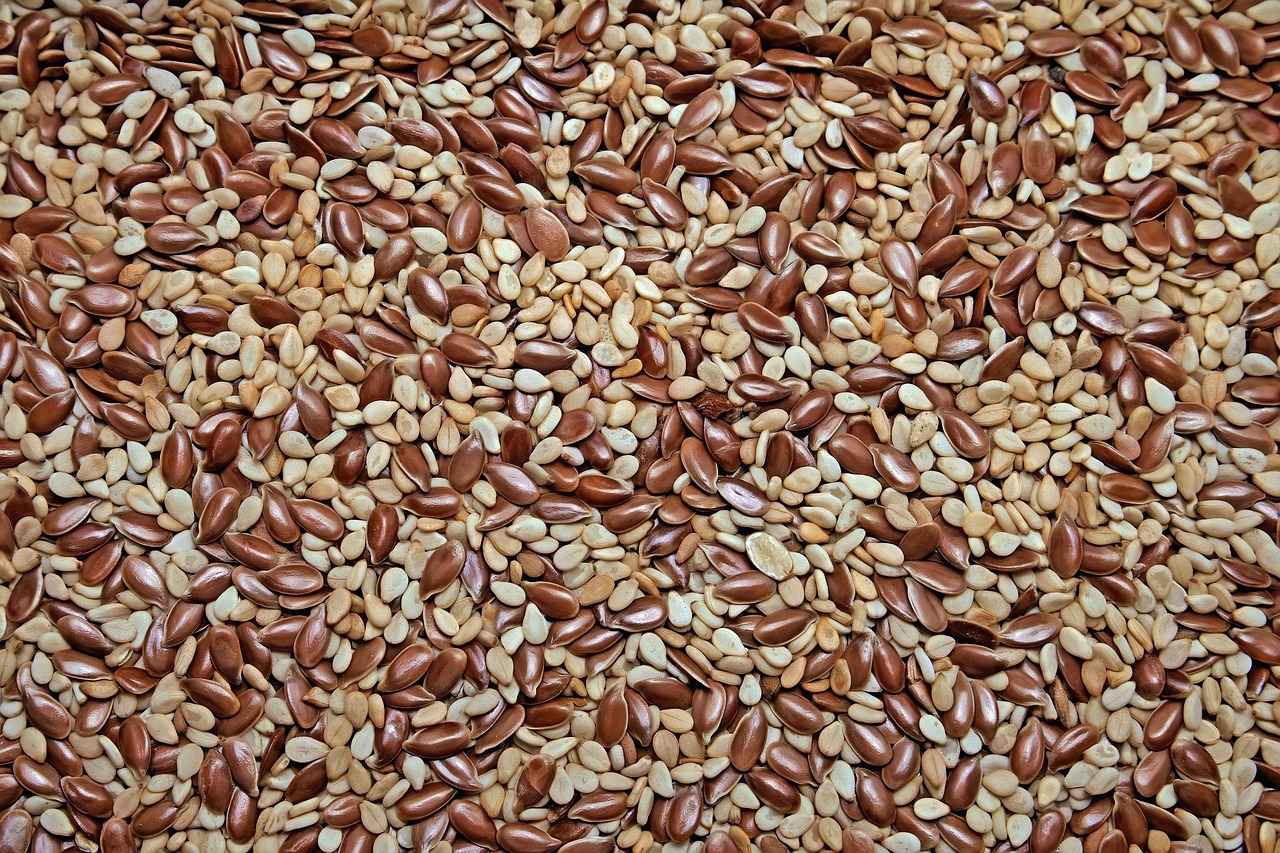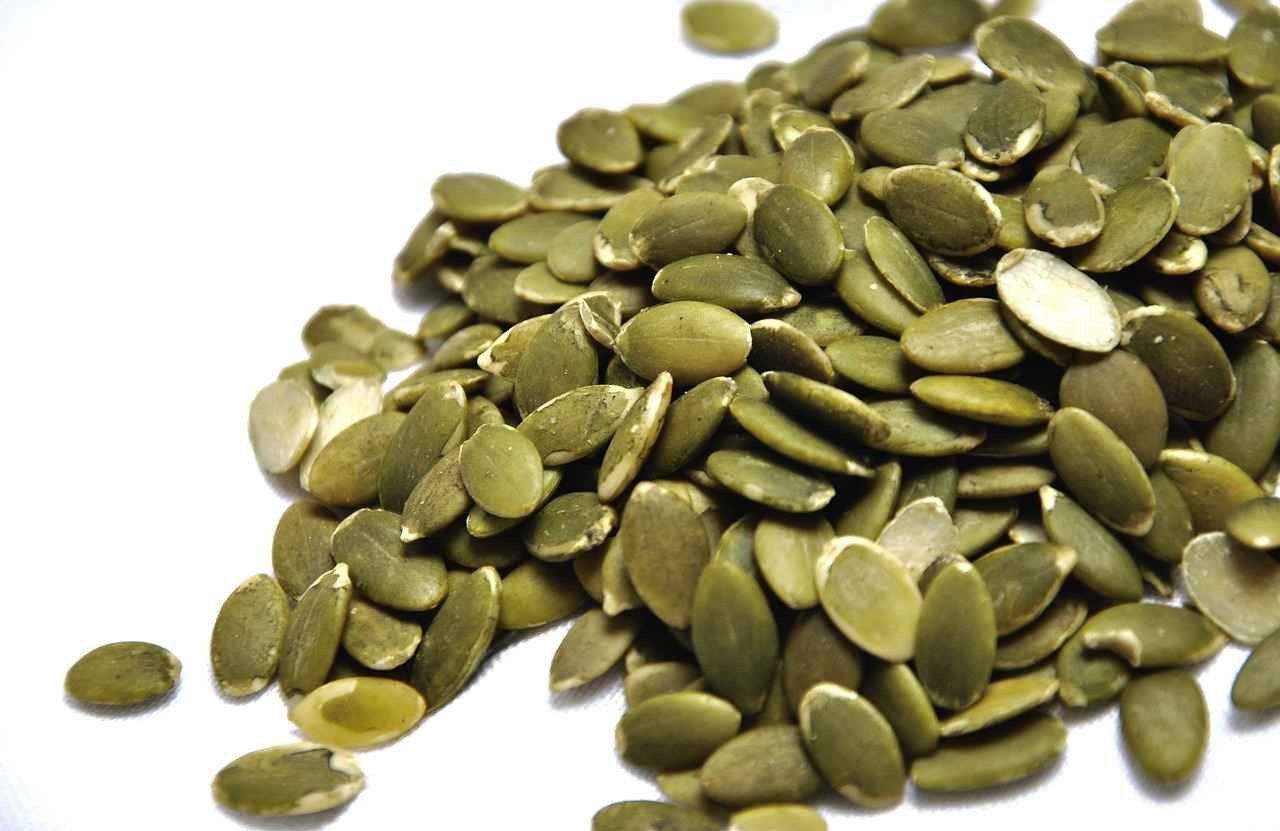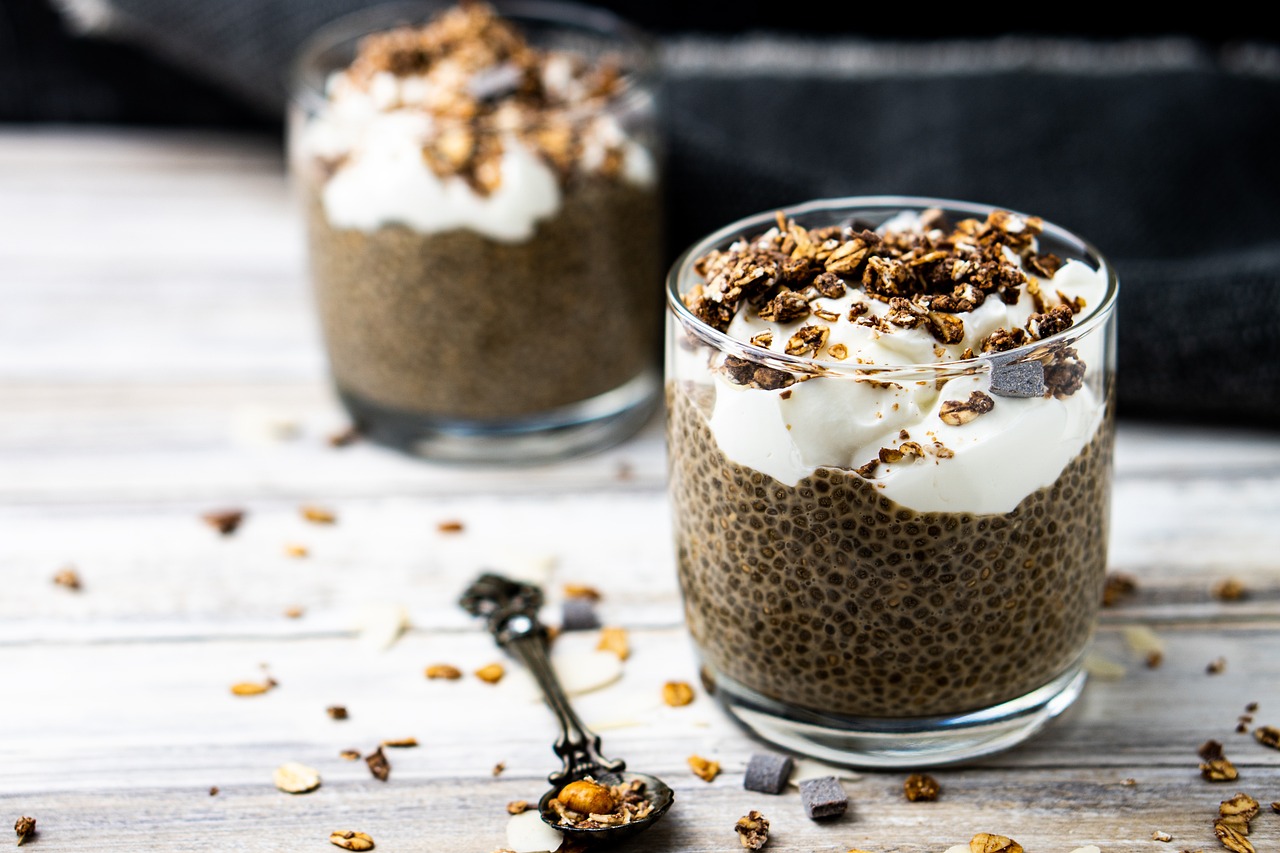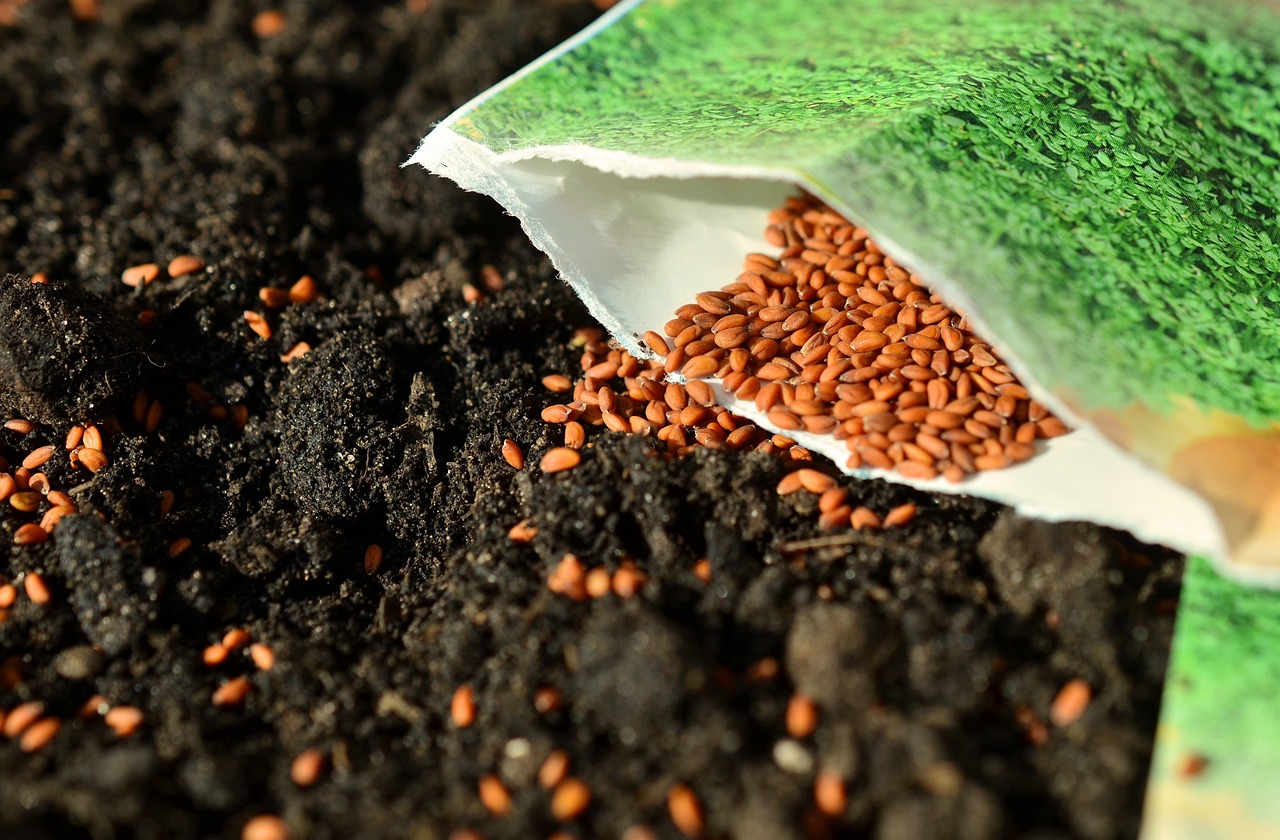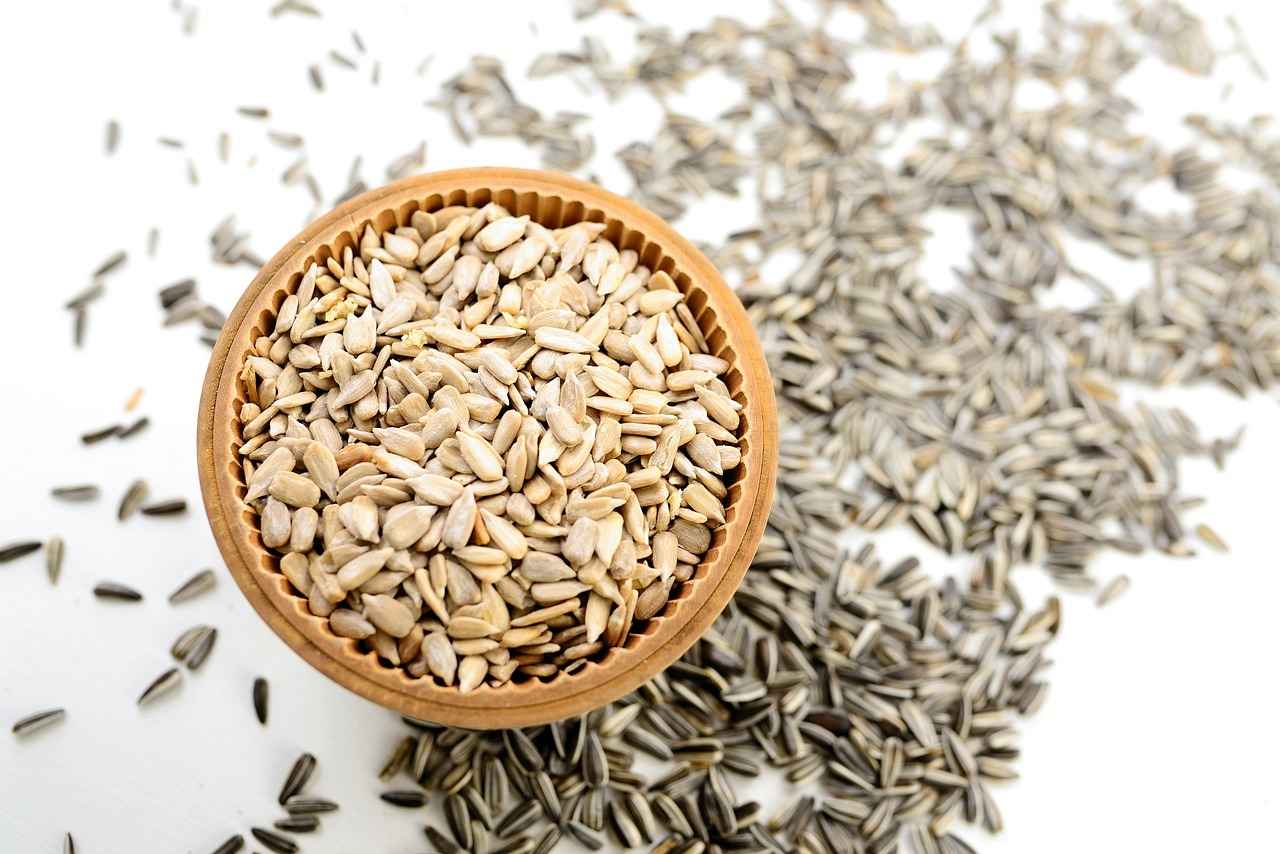This article examines the differences between ground and whole chia seeds, highlighting their nutritional benefits, culinary uses, and potential health impacts. By understanding these distinctions, you can make informed dietary choices that align with your health goals.
Chia seeds, derived from the Salvia hispanica plant, are tiny yet powerful seeds packed with essential nutrients. They are particularly rich in omega-3 fatty acids, fiber, and protein, making them a popular choice among health enthusiasts and nutritionists alike.
When it comes to nutrition, the form of chia seeds you choose can affect your body’s ability to absorb their benefits. Ground chia seeds may enhance nutrient absorption due to their increased surface area, while whole chia seeds provide a satisfying crunch and maintain their fiber content.
Both forms of chia seeds are excellent sources of fiber, but they are processed differently by the body. Ground chia seeds may lead to quicker digestion and nutrient absorption, potentially offering a more immediate energy boost.
Chia seeds are renowned for their high omega-3 fatty acid content. Ground chia seeds may enhance the bioavailability of these essential fats, allowing for better absorption in the body compared to whole seeds.
The impact of chia seeds on digestion can vary significantly between the ground and whole forms. Ground chia seeds are often easier to digest, making them suitable for individuals with sensitive digestive systems.
For those with digestive issues, ground chia seeds can be a gentler option. Their easier breakdown in the digestive tract can help alleviate discomfort and promote gut health.
On the other hand, whole chia seeds can absorb water and expand in the stomach, promoting a feeling of fullness. This characteristic makes them a valuable addition to weight management strategies.
Both ground and whole chia seeds can be incorporated into a variety of recipes, but their uses may differ based on texture and flavor preferences.
Ground chia seeds can be seamlessly blended into smoothies, baked goods, and sauces, enhancing their nutritional profile without significantly altering the texture.
Whole chia seeds add a delightful crunch to dishes like salads and yogurt, making them not only nutritious but also visually appealing.
Regardless of whether they are ground or whole, chia seeds offer numerous health benefits. These include improved heart health, enhanced digestion, and potential support for weight loss.
Rich in omega-3 fatty acids, chia seeds can help lower cholesterol levels and reduce the risk of heart disease, making them an excellent addition to any diet.
Incorporating chia seeds into your meals can aid in weight management by promoting satiety and reducing overall calorie intake. Their high fiber content plays a crucial role in this process.
While chia seeds are generally safe for most individuals, some may experience digestive discomfort or allergic reactions. It’s essential to be aware of potential risks to enjoy their benefits safely.
Though rare, some individuals may have allergies to chia seeds. Monitoring your body’s response when introducing them into your diet is crucial.
Overconsumption of chia seeds, particularly in their whole form, can lead to digestive discomfort or blockages. Moderation is key to enjoying their health benefits.
Choosing between ground and whole chia seeds depends on personal preferences, dietary needs, and culinary uses. Understanding these factors can guide your decision.
Taste and texture significantly influence your choice. Ground chia seeds provide a smoother consistency, while whole seeds offer a crunchier experience.
Consider your health goals—if you’re aiming for better nutrient absorption, ground chia seeds may be more beneficial. Conversely, whole seeds can enhance fiber intake, supporting digestive health.

What Are Chia Seeds?
Chia seeds, derived from the Salvia hispanica plant, are tiny yet remarkably nutrient-dense seeds that have gained significant popularity as a superfood. These seeds are not only rich in essential nutrients but also offer a variety of health benefits that make them a staple in many diets around the world.
Chia seeds are packed with omega-3 fatty acids, which are crucial for heart health. They contain more omega-3s than salmon, making them an excellent plant-based source of these essential fats. Additionally, their high content of fiber aids digestion and promotes a feeling of fullness, which can be beneficial for weight management.
- Protein: Chia seeds provide a complete protein source, containing all nine essential amino acids.
- Vitamins and Minerals: They are rich in calcium, magnesium, phosphorus, and several B vitamins, contributing to overall health.
- Antioxidants: Chia seeds are loaded with antioxidants, which help combat oxidative stress and inflammation in the body.
Incorporating chia seeds into your diet can yield a multitude of health benefits:
- Heart Health: The omega-3 fatty acids in chia seeds can help lower cholesterol levels and reduce the risk of heart disease.
- Digestive Health: Their high fiber content promotes regular bowel movements and supports a healthy gut.
- Weight Management: Chia seeds can absorb water and expand in the stomach, helping you feel fuller for longer and reducing overall calorie intake.
Chia seeds are incredibly versatile and can be easily incorporated into various dishes. Here are some popular ways to use them:
- Smoothies: Add a tablespoon of chia seeds to your smoothie for an extra nutrient boost.
- Baked Goods: Incorporate chia seeds into muffins, bread, or pancakes for added texture and nutrition.
- Salads and Yogurt: Sprinkle whole chia seeds over salads or mix them into yogurt for a crunchy topping.
While chia seeds are generally safe for most people, there are a few considerations:
- Allergic Reactions: Some individuals may experience allergies to chia seeds, so it’s important to monitor your body’s response when trying them for the first time.
- Digestive Issues: Consuming large amounts of chia seeds, especially in their whole form, can lead to digestive discomfort. It is advisable to start with smaller quantities and gradually increase intake.
Chia seeds can be found in both whole and ground forms. The choice between them may depend on personal preferences and dietary needs:
- Whole Chia Seeds: These provide a satisfying crunch and are great for adding texture to dishes.
- Ground Chia Seeds: This form may offer enhanced nutrient absorption, making it a better choice for those looking to maximize their health benefits.
In conclusion, chia seeds are a highly nutritious addition to any diet, offering numerous health benefits and culinary versatility. Whether you prefer them whole or ground, these tiny seeds can play a significant role in promoting a healthy lifestyle.

What Are the Nutritional Differences?
Understanding the nutritional profiles of ground versus whole chia seeds is crucial for anyone looking to enhance their diet. Chia seeds, derived from the Salvia hispanica plant, are packed with nutrients, but the way they are processed can significantly impact their benefits.
Enhanced Nutrient Absorption with Ground Chia Seeds
One of the primary advantages of ground chia seeds is their potential for improved nutrient absorption. When chia seeds are ground, their outer shell is broken down, which can help the body access the nutrients more efficiently. This is particularly beneficial for individuals who may have digestive issues or those looking to maximize the absorption of essential fatty acids and proteins.
Whole Chia Seeds: Fiber and Crunch
On the other hand, whole chia seeds retain their natural form, offering a satisfying crunch and a higher fiber content. The fiber in whole chia seeds can aid in digestion and promote a feeling of fullness, which may be advantageous for weight management. The seeds can absorb up to 12 times their weight in water, swelling in the stomach and helping to curb hunger.
Comparative Nutritional Profiles
| Nutrient | Ground Chia Seeds | Whole Chia Seeds |
|---|---|---|
| Omega-3 Fatty Acids | Higher absorption rate | Present but less bioavailable |
| Fiber | Moderate | Higher |
| Protein | More accessible | Less accessible |
What About Antioxidants?
Both forms of chia seeds are rich in antioxidants, which help combat oxidative stress in the body. However, ground chia seeds may release these antioxidants more readily, providing quicker benefits. This can be particularly advantageous for those looking to boost their overall health and well-being.
Which Form is Better for You?
Choosing between ground and whole chia seeds ultimately depends on your personal health goals. If you are focused on maximizing nutrient absorption, especially omega-3 fatty acids, ground chia seeds might be the better choice. Conversely, if you are looking for a source of dietary fiber and a crunchy texture, whole chia seeds could be ideal.
Incorporating both forms into your diet can provide a balanced approach, allowing you to enjoy the unique benefits of each. For instance, you can add ground chia seeds to smoothies and baked goods for enhanced nutrition, while using whole seeds in salads or yogurt for added texture and fiber.
Ultimately, understanding the nutritional differences between ground and whole chia seeds can help you make informed dietary choices that align with your health objectives.
Fiber Content in Chia Seeds
Chia seeds have gained significant attention in the health and wellness community due to their impressive nutritional profile. Among their many benefits, the fiber content stands out as a key factor contributing to their popularity. In this section, we will delve into the fiber content of chia seeds, comparing the whole and ground forms, and exploring how they can impact your digestive health.
Chia seeds are renowned for their high fiber content, with approximately 10 grams of fiber per ounce. This makes them an excellent addition to a balanced diet, promoting digestive health and aiding in weight management. The fiber in chia seeds is primarily soluble, which means it can absorb water and form a gel-like substance in the digestive tract, helping to regulate bowel movements.
Both forms of chia seeds are rich in fiber, but the way your body processes them can differ significantly. Whole chia seeds can take longer to digest, which may lead to a gradual release of energy and a prolonged feeling of fullness. This can be particularly beneficial for those looking to manage their weight.
On the other hand, ground chia seeds may lead to quicker digestion and nutrient absorption. When chia seeds are ground, their tough outer shell is broken down, making it easier for your body to access the nutrients inside. This can result in a more immediate energy boost and enhanced nutrient availability, especially for individuals with digestive issues.
The fiber in chia seeds plays a crucial role in promoting digestive health. It can help prevent constipation by adding bulk to the stool and facilitating regular bowel movements. For those who consume ground chia seeds, the softer texture may be easier on the digestive system, making them a suitable option for individuals with sensitive stomachs.
Additionally, the soluble fiber in chia seeds can aid in maintaining a healthy gut microbiome. A balanced gut flora is essential for optimal digestion and overall health. By incorporating chia seeds into your diet, you can help support the growth of beneficial gut bacteria.
One of the most significant benefits of the fiber content in chia seeds is its ability to promote a feeling of fullness. When chia seeds absorb liquid, they expand and create a gel-like substance, which can help you feel satisfied after meals. This can be particularly advantageous for those looking to control their appetite and reduce overall calorie intake.
Incorporating chia seeds into meals can be an effective strategy for weight management. Whether in smoothies, oatmeal, or baked goods, the fiber-rich nature of chia seeds can enhance the nutritional value of your meals while keeping you feeling full longer.
To reap the benefits of chia seeds, consider adding them to your daily routine. Whole chia seeds can be sprinkled on salads, yogurt, or oatmeal, while ground chia seeds can be easily mixed into smoothies, protein shakes, or baked goods. Experimenting with both forms can help you discover which one works best for your dietary needs and preferences.
In summary, both whole and ground chia seeds offer significant fiber content that can benefit your digestive health. Understanding how your body processes these seeds can help you make informed dietary choices that align with your health goals.
Omega-3 Fatty Acids: Whole vs. Ground
Omega-3 fatty acids are essential fats that play a crucial role in maintaining overall health. They are particularly abundant in chia seeds, which have gained popularity as a superfood. However, there is an ongoing debate about whether whole or ground chia seeds offer better health benefits, especially regarding the absorption of these vital nutrients.
Omega-3 fatty acids are known for their numerous health benefits, including reducing inflammation, supporting heart health, and improving brain function. These fats are categorized into three main types: ALA (alpha-linolenic acid), EPA (eicosapentaenoic acid), and DHA (docosahexaenoic acid). Chia seeds are an excellent source of ALA, which is a plant-based omega-3 fatty acid.
When it comes to the bioavailability of omega-3 fatty acids, ground chia seeds may have an edge. This is primarily because grinding the seeds breaks down their tough outer shell, making the nutrients more accessible for absorption in the digestive tract. In contrast, whole chia seeds can pass through the digestive system relatively intact, potentially leading to less efficient nutrient absorption.
Research indicates that ground chia seeds may promote better absorption of omega-3 fatty acids. When the seeds are ground, the cell walls are disrupted, allowing the body to utilize the nutrients more effectively. This means that individuals looking to maximize their intake of omega-3s may benefit more from using ground chia seeds in their diets.
There are various ways to incorporate ground chia seeds into your meals. Here are some popular methods:
- Smoothies: Add ground chia seeds to your favorite smoothie for a nutrient boost.
- Baked Goods: Substitute a portion of flour with ground chia seeds in recipes for muffins and pancakes.
- Oatmeal: Stir ground chia seeds into your oatmeal for added texture and nutrition.
While whole chia seeds offer benefits, such as high fiber content and a satisfying crunch, they may not provide the same level of omega-3 fatty acids as ground seeds. Additionally, some individuals may find whole seeds challenging to digest, particularly if they do not consume enough water alongside them.
Ultimately, the choice between whole and ground chia seeds depends on your individual health goals and dietary preferences. If your primary focus is on maximizing omega-3 fatty acid intake, ground chia seeds may be the better option. However, incorporating both forms into your diet can offer a balanced approach, allowing you to enjoy the unique textures and flavors each form provides.

How Do They Affect Digestion?
When it comes to chia seeds, many people are curious about their effects on digestion. The impact of chia seeds on digestion can significantly differ based on whether they are consumed in their whole or ground form. Understanding these differences is crucial for maximizing their health benefits and ensuring optimal digestive health.
Whole chia seeds are known for their ability to absorb water and expand in the stomach. This characteristic can be beneficial for promoting healthy bowel movements. When consumed, they can absorb up to 12 times their weight in water, forming a gel-like substance that aids in smooth digestion and helps prevent constipation. The high fiber content in whole chia seeds also contributes to a feeling of fullness, which can assist in weight management.
On the other hand, ground chia seeds may be easier to digest for many individuals. Grinding the seeds breaks down their tough outer shell, making the nutrients more bioavailable. This means that your body can absorb the omega-3 fatty acids, protein, and other essential nutrients more efficiently. For individuals with sensitive stomachs or digestive issues, ground chia seeds can provide a gentler alternative.
While both forms of chia seeds are nutritious, the method of consumption can influence how well your body absorbs these nutrients. Ground chia seeds may enhance the bioavailability of their beneficial compounds, allowing for improved absorption of essential nutrients. In contrast, whole seeds may pass through the digestive tract more quickly, potentially leading to less nutrient uptake. This is particularly important for those looking to maximize their nutrient intake.
The fiber content in both whole and ground chia seeds supports gut health by promoting the growth of beneficial gut bacteria. A healthy gut microbiome is essential for overall digestive health and can influence various bodily functions, including immune response and metabolism. Including chia seeds in your diet can contribute to a balanced gut environment, which is crucial for effective digestion.
- Start Slowly: If you are new to chia seeds, begin with small amounts to allow your digestive system to adjust.
- Mix with Liquids: Soaking whole chia seeds in water or other liquids before consumption can make them easier to digest.
- Use Ground Seeds in Smoothies: Adding ground chia seeds to smoothies can enhance nutrient absorption without altering the texture significantly.
- Experiment with Recipes: Incorporate both forms of chia seeds into your meals, such as salads, yogurt, or baked goods, to enjoy their unique benefits.
While chia seeds are generally safe for most individuals, excessive consumption, especially of whole seeds, can lead to digestive discomfort or blockages. It is essential to consume chia seeds in moderation and ensure adequate hydration, as they expand in the stomach. Additionally, some individuals may experience allergic reactions, although these are rare.
In summary, both whole and ground chia seeds offer unique benefits for digestion. Whole seeds can promote healthy bowel movements and satiety, while ground seeds may enhance nutrient absorption and be gentler on the digestive system. Understanding these differences can help you make informed choices about incorporating chia seeds into your diet for optimal digestive health.
Benefits of Ground Chia Seeds for Digestion
Ground chia seeds have gained popularity as a dietary supplement, particularly for their potential benefits to the digestive system. Understanding how they differ from whole chia seeds can help individuals with digestive sensitivities make informed choices.
For many individuals, the digestive system can be sensitive to various foods. Ground chia seeds are often recommended because they are easier to break down compared to their whole counterparts. This is particularly beneficial for those who may experience discomfort or bloating when consuming whole seeds.
The fiber content in chia seeds plays a crucial role in digestive health. Ground chia seeds offer a more accessible form of fiber that can promote regular bowel movements without the potential discomfort that whole seeds might cause. When ground, chia seeds can absorb water and expand, creating a gel-like substance that aids in digestion.
Ground chia seeds are rich in essential nutrients, including omega-3 fatty acids, protein, and antioxidants. These nutrients contribute to overall health and can support digestive function. The process of grinding the seeds makes these nutrients more bioavailable, allowing the body to absorb them more efficiently.
While ground chia seeds are generally safe for most people, moderation is key. Excessive consumption can lead to digestive discomfort, including gas or bloating. It’s important to gradually introduce them into your diet and monitor your body’s response.
- Smoothies: Blend ground chia seeds into your morning smoothie for added nutrition.
- Baked Goods: Substitute a portion of flour with ground chia seeds in recipes for muffins or bread.
- Soups and Sauces: Use ground chia seeds as a thickening agent in soups and sauces.
While whole chia seeds also offer health benefits, including promoting satiety and providing a crunchy texture, they may not be suitable for everyone. For those with digestive issues, whole seeds can sometimes lead to discomfort. It’s essential to consider individual digestive health when choosing between ground and whole chia seeds.
Incorporating ground chia seeds into your diet can be a beneficial choice for those seeking to improve their digestive health. Their easy digestibility, combined with their rich nutrient profile, makes them an excellent addition to various recipes. Always consult with a healthcare professional if you have specific dietary concerns or conditions.
Whole Chia Seeds and Satiety
Whole chia seeds are not just a trendy addition to health foods; they offer a myriad of benefits, particularly when it comes to promoting a feeling of fullness. These tiny seeds, derived from the Salvia hispanica plant, are renowned for their ability to absorb water and expand significantly in the stomach. This unique characteristic can play a crucial role in weight management and overall dietary satisfaction.
When consumed, whole chia seeds can absorb up to 12 times their weight in water. This absorption creates a gel-like substance in the stomach, which can lead to a prolonged feeling of fullness. The high fiber content in chia seeds also contributes to this sensation. Fiber slows down digestion, allowing for a gradual release of energy and reducing hunger pangs.
- Weight Management: Feeling full can help control cravings and reduce the likelihood of overeating. Incorporating whole chia seeds into meals can assist those looking to manage their weight effectively.
- Reduced Caloric Intake: By promoting satiety, whole chia seeds may contribute to lower overall calorie consumption, making it easier to maintain a balanced diet.
- Improved Nutritional Balance: When you feel full longer, you are less likely to snack on unhealthy foods, which can lead to better nutrition overall.
Integrating whole chia seeds into your meals is simple and versatile:
- Breakfast: Add them to smoothies, oatmeal, or yogurt for a nutritious boost.
- Snacks: Mix them into energy bars or homemade granola for added texture and fiber.
- Baking: Use them in bread or muffin recipes to enhance the nutritional value.
While whole chia seeds are generally safe for most individuals, it’s essential to consume them with adequate water to avoid digestive discomfort. Additionally, those with specific dietary restrictions or allergies should consult a healthcare professional before adding them to their routine.
Whole chia seeds offer a unique combination of fiber, protein, and healthy fats that not only enhances satiety but also supports overall health. Their ability to absorb water and expand in the stomach makes them an effective tool for those seeking to manage their weight and improve their dietary habits. By incorporating whole chia seeds into your meals, you can enjoy a satisfying and nutritious addition to your diet.
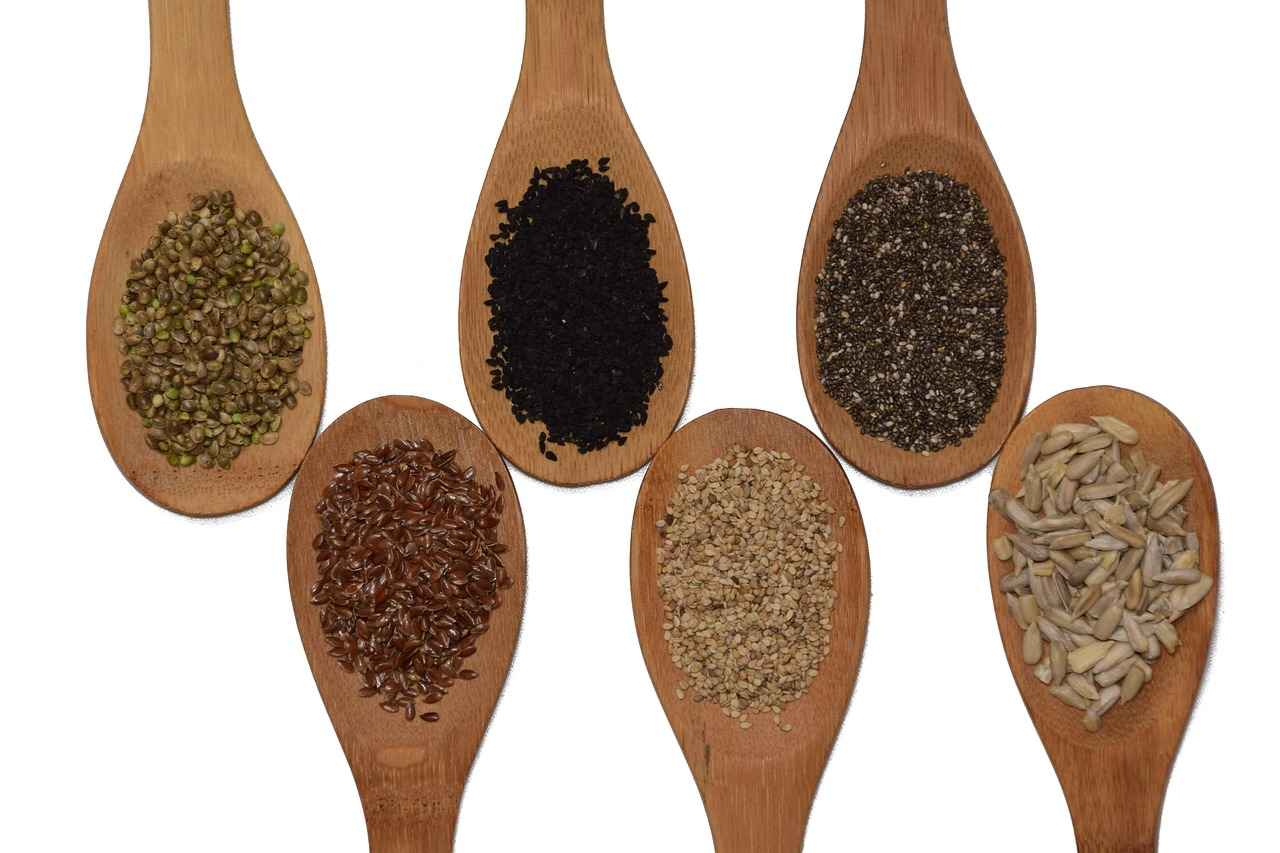
What Are the Culinary Uses of Each Form?
When it comes to incorporating chia seeds into your diet, understanding the culinary uses of both ground and whole chia seeds is essential. Each form offers unique textures and flavors that can enhance a variety of dishes, catering to different culinary preferences.
Ground chia seeds are incredibly versatile and can be seamlessly integrated into numerous recipes. Here are some popular ways to use them:
- Smoothies: Adding ground chia seeds to smoothies not only boosts their nutritional value but also helps create a creamier texture.
- Baked Goods: Incorporate ground chia seeds into muffins, pancakes, or bread for added fiber and omega-3 fatty acids.
- Soups and Sauces: They can act as a thickening agent for soups and sauces, enhancing texture without altering the flavor.
- Chia Pudding: Mix ground chia seeds with your choice of milk and sweetener to create a delicious and nutritious pudding.
Whole chia seeds bring a delightful crunch and unique texture to dishes. Here are some culinary applications:
- Salads: Sprinkling whole chia seeds over salads adds a satisfying crunch and visual appeal.
- Yogurt and Parfaits: Whole seeds can be layered in yogurt or parfaits, providing a nutritious and textural contrast.
- Granola and Trail Mix: They make a great addition to granola mixes or trail mixes, enhancing both flavor and health benefits.
- As a Topping: Use whole chia seeds as a topping for oatmeal or smoothie bowls for added texture and nutrition.
The choice between ground and whole chia seeds often comes down to personal preference regarding texture and flavor. Ground chia seeds offer a smoother consistency, making them ideal for blended dishes. In contrast, whole chia seeds provide a crunchy element, which can be more satisfying in salads and snacks. Consider experimenting with both forms to discover which you enjoy more in different recipes.
Absolutely! Many people find that combining ground and whole chia seeds in their recipes can create a delightful balance of textures. For instance, you might use ground chia seeds in a smoothie for creaminess while sprinkling whole seeds on top of a smoothie bowl for added crunch. This combination can enhance both the nutritional profile and the overall eating experience.
If you’re eager to incorporate chia seeds into your meals, here are a couple of specific recipes that highlight both ground and whole chia seeds:
- Chia Seed Pancakes: Combine ground chia seeds with flour, baking powder, and your favorite milk to create fluffy pancakes. Top with whole chia seeds for added texture.
- Overnight Oats: Mix rolled oats with yogurt or milk, add a tablespoon of ground chia seeds for thickness, and top with whole chia seeds and fruits in the morning.
In summary, both ground and whole chia seeds offer distinct culinary benefits. Ground chia seeds are perfect for blending into recipes where a smooth texture is desired, while whole chia seeds add a satisfying crunch to salads and toppings. Experimenting with both forms can enhance your meals and provide a range of health benefits.
Incorporating Ground Chia Seeds in Recipes
can be a game-changer for those looking to boost their nutrition without sacrificing flavor or texture. Ground chia seeds are incredibly versatile, making them an excellent addition to a variety of dishes. Below, we explore how to seamlessly integrate these tiny powerhouses into your meals.
Ground chia seeds offer several advantages over their whole counterparts. They are easier to digest, allowing your body to absorb nutrients more efficiently. Additionally, grinding the seeds releases their omega-3 fatty acids and antioxidants, making them more bioavailable. This means you can reap the benefits of these essential nutrients more effectively.
- Boost Nutritional Value: Adding a tablespoon of ground chia seeds to your smoothie can significantly enhance its nutritional profile. They are rich in fiber, protein, and omega-3 fatty acids.
- Texture and Consistency: Unlike whole seeds, ground chia seeds blend smoothly into drinks, providing a creamy texture without any gritty feel.
- Flavor Neutrality: Ground chia seeds have a mild flavor that won’t overpower your favorite smoothie ingredients.
Incorporating ground chia seeds into baked goods is a fantastic way to increase their health benefits. Here are some ideas:
- Pancakes: Substitute a portion of flour with ground chia seeds for added nutrition.- Bread: Mix ground chia seeds into your bread dough for a nutty flavor and extra fiber.- Muffins: Add ground chia seeds to muffin batter for a moist texture and nutritional boost.
Ground chia seeds can also be used to thicken sauces and dressings. Their ability to absorb liquid makes them an excellent thickening agent without the need for additional starches.
- Salad Dressings: Mix ground chia seeds into your vinaigrette for a thicker consistency and added nutrients.
- Soups and Stews: Stir in ground chia seeds to enhance the texture and nutritional value of your favorite soups.
Ground chia seeds can elevate your snack game:
- Energy Bites: Combine ground chia seeds with oats, nut butter, and honey to create nutritious energy bites.
- Chia Pudding: Mix ground chia seeds with almond milk and let them sit overnight for a delicious, nutrient-dense pudding.
In conclusion, ground chia seeds are a versatile ingredient that can be easily incorporated into various recipes. Whether you’re adding them to smoothies, baked goods, sauces, or snacks, their health benefits are undeniable. By experimenting with ground chia seeds, you can enhance not only the nutritional profile of your meals but also enjoy a variety of textures and flavors.
Using Whole Chia Seeds in Cooking
Whole chia seeds are not just a trendy superfood; they are a versatile ingredient that can significantly enhance the nutritional value and texture of various dishes. Their unique crunch makes them an appealing addition to meals, and they can be easily incorporated into a variety of recipes.
Whole chia seeds are derived from the Salvia hispanica plant and are packed with essential nutrients, including omega-3 fatty acids, fiber, and protein. This tiny seed is known for its ability to absorb liquid, expanding up to 12 times its size when soaked. This property not only adds to their nutritional benefits but also enhances their texture in dishes.
Incorporating whole chia seeds into your meals can be both simple and rewarding. Here are some creative ways to use them:
- Salads: Sprinkle whole chia seeds over salads for an added crunch. They can complement leafy greens and dressings beautifully.
- Yogurt and Smoothies: Add whole chia seeds to yogurt or smoothies for a nutritious boost. They not only enhance the texture but also make the dish more filling.
- Breakfast Bowls: Mix whole chia seeds into oatmeal or breakfast bowls. They can absorb moisture and create a delightful, chewy texture.
- Baking: Incorporate whole chia seeds into bread, muffins, or granola bars. They can add a nutty flavor and increase the fiber content of your baked goods.
Including whole chia seeds in your diet can offer numerous health advantages:
- Improved Digestion: The high fiber content in whole chia seeds can aid digestion and promote regular bowel movements.
- Heart Health: Rich in omega-3 fatty acids, whole chia seeds can help lower cholesterol levels and reduce the risk of heart disease.
- Weight Management: Their ability to absorb liquid and expand can promote a sense of fullness, which may help in weight management.
To maximize the benefits of whole chia seeds, consider the following tips:
- Soaking: Soaking chia seeds in water or milk for at least 30 minutes can enhance their digestibility and make them easier to incorporate into your meals.
- Storage: Keep whole chia seeds in a cool, dry place to maintain their freshness. They can last for several years when stored properly.
- Moderation: While whole chia seeds are nutritious, consuming them in moderation is essential to avoid digestive discomfort.
In summary, whole chia seeds are a fantastic addition to a variety of dishes, providing both nutritional value and a satisfying crunch. Whether you’re sprinkling them on salads, blending them into smoothies, or incorporating them into baked goods, their versatility makes them a must-have in any kitchen. Explore the myriad of ways to use whole chia seeds and enjoy their health benefits!
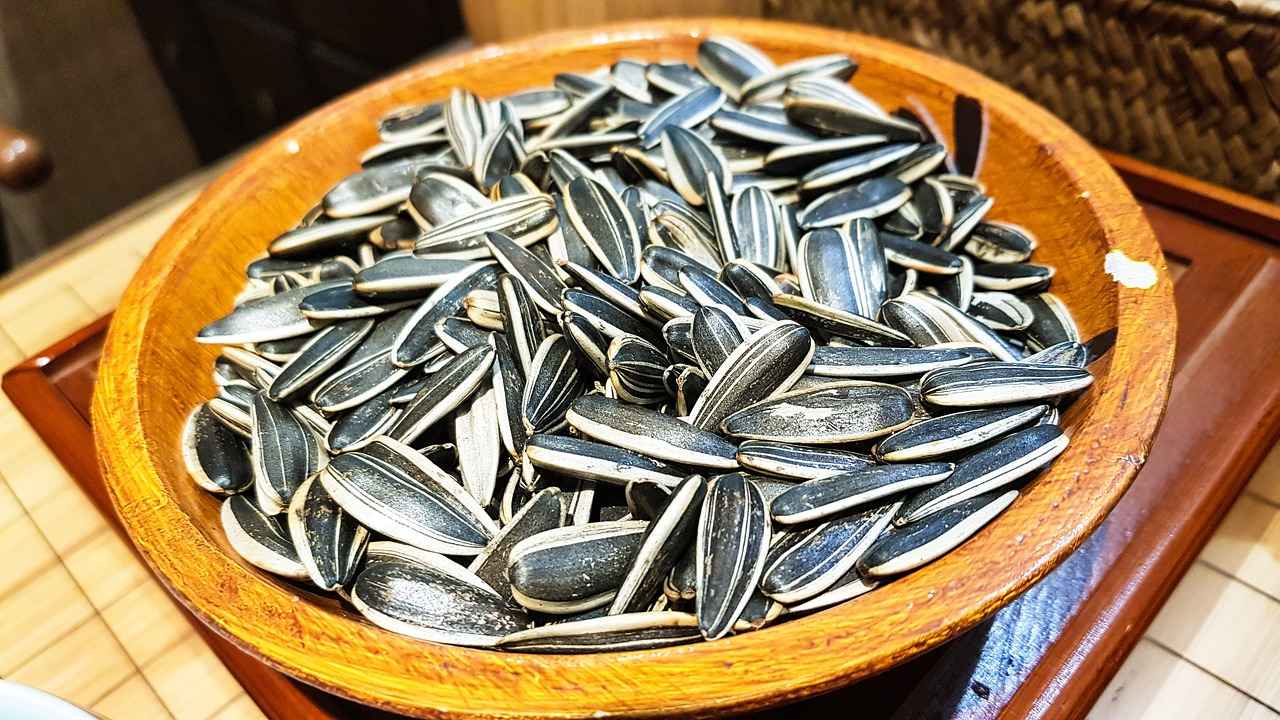
What Are the Health Benefits of Chia Seeds?
Chia seeds have gained immense popularity in recent years, celebrated for their remarkable health benefits. These tiny seeds, derived from the Salvia hispanica plant, are packed with essential nutrients that can contribute to overall well-being. In this section, we will explore the various health benefits of chia seeds, highlighting their potential to improve heart health, enhance digestion, and support weight management.
Chia seeds are an excellent source of omega-3 fatty acids, which are crucial for maintaining heart health. These fatty acids are known to lower cholesterol levels and reduce inflammation, both of which are vital for preventing heart disease. Studies have shown that regular consumption of chia seeds can lead to a decrease in LDL cholesterol and an increase in HDL cholesterol, promoting a healthier lipid profile.
One of the standout features of chia seeds is their high fiber content. Each serving contains a significant amount of soluble and insoluble fiber, which aids in digestion. The soluble fiber found in chia seeds absorbs water and forms a gel-like substance, which can help regulate bowel movements and prevent constipation. Additionally, the insoluble fiber promotes a healthy gut microbiome, further enhancing digestive health.
Incorporating chia seeds into your diet can be an effective strategy for weight management. Their ability to absorb liquid allows them to expand in the stomach, promoting a feeling of fullness that can help curb overeating. This characteristic, combined with their low calorie and high fiber content, makes chia seeds a valuable addition to meals for those looking to maintain or lose weight.
Beyond heart health, digestion, and weight management, chia seeds are also rich in essential vitamins and minerals. They contain significant amounts of calcium, magnesium, and phosphorus, which are vital for bone health. Furthermore, chia seeds are a source of antioxidants, which can help protect the body from oxidative stress and inflammation.
There are numerous ways to enjoy chia seeds in your daily meals. They can be added to smoothies, yogurt, oatmeal, or salads for an extra nutritional boost. Additionally, chia seeds can be used to create chia pudding, a popular dish that combines chia seeds with milk or a milk alternative, allowing them to soak and expand overnight. This versatile ingredient can easily fit into various recipes, making it easy to reap their health benefits.
While chia seeds are generally safe for most individuals, it’s important to consume them in moderation. Overconsumption can lead to digestive discomfort, particularly for those who are not accustomed to a high-fiber diet. Additionally, some individuals may experience allergic reactions to chia seeds, although this is rare. Always monitor your body’s response when introducing new foods into your diet.
In summary, chia seeds are a powerhouse of nutrients that can significantly benefit your health. From improving heart health to enhancing digestion and supporting weight management, these tiny seeds pack a punch. By incorporating them into your diet, you can enjoy their numerous health benefits while adding variety to your meals.
Heart Health Benefits of Chia Seeds
Chia seeds have gained recognition as a nutritional powerhouse, particularly when it comes to promoting heart health. These tiny seeds are packed with omega-3 fatty acids, which are essential for maintaining a healthy cardiovascular system. In this section, we will delve into the heart health benefits of chia seeds, focusing on their ability to lower cholesterol levels and reduce the risk of heart disease, regardless of whether they are consumed in their whole or ground form.
Omega-3 fatty acids are known for their anti-inflammatory properties and play a crucial role in heart health. They help to lower triglyceride levels, reduce blood pressure, and prevent the formation of arterial plaques. By incorporating chia seeds into your diet, you can increase your intake of these vital fats. This is particularly important as many diets lack sufficient omega-3s, leading to an imbalance with omega-6 fatty acids, which can promote inflammation.
Yes, studies have shown that chia seeds can positively impact cholesterol levels. The soluble fiber in chia seeds binds to bile acids in the digestive system, which can lead to a decrease in LDL (low-density lipoprotein) cholesterol, often referred to as “bad” cholesterol. This process not only helps in reducing cholesterol levels but also contributes to overall heart health.
Incorporating chia seeds into your diet may lower the risk of developing heart disease. Their high levels of antioxidants help combat oxidative stress, a significant factor in heart disease progression. Additionally, the fiber content in chia seeds aids in maintaining healthy blood sugar levels, further reducing the risk of heart-related issues.
- Smoothies: Blend chia seeds into your morning smoothie for a nutrient boost.
- Oatmeal: Add whole or ground chia seeds to your oatmeal or overnight oats for added texture and health benefits.
- Baked Goods: Substitute chia seeds for eggs in baking recipes for a vegan option that enhances heart health.
- Salads: Sprinkle whole chia seeds on salads for a delightful crunch and nutritional enhancement.
While chia seeds are generally safe for most individuals, it’s important to consume them in moderation. Their high fiber content can cause digestive discomfort if consumed in excess, especially in their whole form. It is advisable to start with a small amount and gradually increase your intake to allow your digestive system to adjust.
The recommended daily intake of chia seeds is typically around 1-2 tablespoons. This amount provides a substantial dose of omega-3 fatty acids and other essential nutrients without overwhelming your digestive system.
In summary, chia seeds are a versatile and nutritious addition to your diet, especially for those looking to improve their heart health. With their rich content of omega-3 fatty acids, fiber, and antioxidants, they can play a significant role in lowering cholesterol levels and reducing the risk of heart disease. By incorporating chia seeds into various meals, you can enjoy their health benefits while enhancing the overall nutritional profile of your diet.
Chia Seeds and Weight Management
Chia seeds have gained significant popularity in recent years, particularly among those seeking to manage their weight effectively. These tiny seeds are not just a trendy superfood; they offer a range of benefits that can aid in weight loss and overall health. In this section, we will delve into how chia seeds can support weight management efforts through their unique properties.
One of the most remarkable features of chia seeds is their ability to promote a feeling of fullness. When chia seeds come into contact with liquid, they absorb up to 12 times their weight in water, forming a gel-like substance. This process not only increases the volume of the seeds but also slows down the digestion process, leading to prolonged satiety. As a result, incorporating chia seeds into your meals can help curb hunger and reduce the likelihood of overeating.
By enhancing feelings of fullness, chia seeds can play a crucial role in reducing overall calorie intake. When you feel satisfied after a meal, you are less likely to reach for unhealthy snacks or second servings. This can be particularly beneficial for those trying to lose weight or maintain a healthy weight. Adding chia seeds to your daily diet can be an effective strategy for managing your caloric consumption without feeling deprived.
In addition to promoting satiety, chia seeds are packed with essential nutrients. They are an excellent source of fiber, which aids in digestion and helps regulate blood sugar levels. The high fiber content contributes to a feeling of fullness, making it easier to stick to a healthy eating plan. Furthermore, chia seeds provide a good balance of protein and healthy fats, which are vital for overall health and can help keep you energized throughout the day.
There are numerous ways to include chia seeds in your daily meals. Here are some practical suggestions:
- Smoothies: Blend chia seeds into your favorite smoothie for an extra nutritional boost.
- Oatmeal: Stir chia seeds into your morning oatmeal or yogurt for added texture and nutrients.
- Baking: Use chia seeds in baking recipes, such as muffins or energy bars, to enhance their fiber content.
- Salads: Sprinkle whole chia seeds on salads for a delightful crunch.
Research supports the weight management benefits of chia seeds. Studies have shown that incorporating chia seeds into a balanced diet can lead to significant reductions in body weight and waist circumference. The combination of high fiber, protein, and healthy fats in chia seeds contributes to improved metabolic health, making them a valuable addition to any weight loss plan.
Incorporating chia seeds into your diet can be a simple yet effective strategy for supporting weight management efforts. Their ability to promote satiety, reduce calorie intake, and provide essential nutrients makes them a powerful ally in your journey toward a healthier lifestyle. Whether you choose to consume them whole or ground, the benefits of chia seeds are undeniable. Start experimenting with this versatile superfood today and discover how it can enhance your meals while supporting your weight management goals.

Are There Any Risks Associated with Chia Seeds?
Chia seeds have gained immense popularity due to their numerous health benefits, but it is essential to understand that they may not be suitable for everyone. This section delves into the potential risks associated with chia seeds, particularly focusing on digestive issues and allergic reactions.
While chia seeds are a nutrient powerhouse, some individuals may experience digestive discomfort upon consumption. This discomfort can manifest as bloating, gas, or even constipation. The high fiber content in chia seeds, although beneficial for many, can be overwhelming for those unaccustomed to a fiber-rich diet. It is recommended to gradually introduce chia seeds into your diet to allow your digestive system to adjust.
Although uncommon, allergic reactions to chia seeds can occur. Symptoms may include itching, swelling, or gastrointestinal distress. If you have a history of allergies to similar seeds or plants, it’s prudent to consult with a healthcare professional before adding chia seeds to your diet. Monitoring your body’s response when trying chia seeds for the first time can help identify any adverse reactions early on.
Moderation is crucial when incorporating chia seeds into your diet. Consuming excessive amounts, particularly of whole chia seeds, can lead to digestive blockages. The seeds can absorb significant amounts of water, expanding in the digestive tract and potentially causing discomfort or even obstruction. A general guideline is to limit intake to about 1-2 tablespoons per day, ensuring that you drink plenty of water to aid digestion.
Chia seeds may also interact with certain medications, particularly those related to blood thinning and blood pressure. The high omega-3 fatty acid content can have a blood-thinning effect, which may amplify the effects of anticoagulant medications. If you are on such medications, it’s essential to discuss chia seed consumption with your healthcare provider to avoid any complications.
- Individuals with Allergies: Anyone with a known allergy to chia or related seeds should steer clear of chia seeds.
- Those with Digestive Disorders: Individuals with conditions like irritable bowel syndrome (IBS) may find chia seeds exacerbate their symptoms.
- Pregnant and Nursing Women: While chia seeds can be part of a healthy diet, consult a healthcare provider for personalized advice.
To enjoy the benefits of chia seeds while minimizing risks, consider the following tips:
- Start Small: Begin with a small amount to see how your body reacts.
- Stay Hydrated: Drink plenty of water to help the seeds expand and aid digestion.
- Consult a Professional: If you have underlying health conditions or concerns, seek advice from a healthcare professional.
In summary, while chia seeds are generally safe and beneficial for most people, it is crucial to be aware of the potential risks associated with their consumption. By understanding your own body and making informed choices, you can enjoy the health benefits of chia seeds while minimizing any adverse effects.
Possible Allergies to Chia Seeds
Chia seeds have gained immense popularity due to their numerous health benefits and versatility in culinary applications. However, as with any food, it’s important to be aware of potential allergies. This section delves into the , helping individuals understand the risks and how to safely incorporate them into their diets.
Although chia seed allergies are considered rare, they can occur. Individuals who are allergic to other seeds, such as sesame or flaxseed, may have a higher likelihood of developing an allergy to chia seeds. Symptoms of an allergic reaction can vary widely and may include:
- Skin Reactions: Hives, rashes, or eczema can develop upon consumption.
- Gastrointestinal Issues: Symptoms such as nausea, vomiting, or diarrhea may arise.
- Respiratory Problems: Some individuals may experience difficulty breathing, wheezing, or nasal congestion.
If you suspect that you have an allergy to chia seeds, it’s crucial to monitor your body’s response when you introduce them into your diet. Here are some steps to help identify any allergic reactions:
- Start Slow: Introduce chia seeds gradually, beginning with small amounts to see how your body reacts.
- Keep a Food Diary: Documenting what you eat and any symptoms you experience can help pinpoint potential triggers.
- Consult a Healthcare Professional: If you notice any adverse reactions, consult with an allergist for appropriate testing and guidance.
Individuals with allergies to other seeds may be at risk for cross-reactivity with chia seeds. This means that if you are allergic to one type of seed, your immune system may mistakenly identify chia seeds as a threat as well. It’s essential to be cautious if you have known allergies to related foods.
Even if you do not have a known allergy, it’s wise to consume chia seeds in moderation. Overconsumption can lead to digestive discomfort or other gastrointestinal issues. Start with a teaspoon per day and gradually increase to avoid overwhelming your system.
If you experience symptoms of an allergic reaction after consuming chia seeds, it is important to take immediate action:
- Stop Consumption: Cease eating chia seeds and any products containing them.
- Seek Medical Attention: If symptoms are severe, such as difficulty breathing, seek emergency medical help.
- Follow Up: Schedule an appointment with a healthcare provider to discuss your symptoms and consider allergy testing.
If you find that you are allergic to chia seeds, there are several nutritious alternatives you can consider:
- Flaxseeds: Rich in omega-3 fatty acids and fiber, flaxseeds can be a good substitute.
- Hemp Seeds: These seeds provide a nutty flavor and are packed with protein and healthy fats.
- Sunflower Seeds: A crunchy alternative, sunflower seeds are also high in nutrients.
In conclusion, while chia seeds are a nutritious addition to many diets, it is essential to be aware of the potential for allergies. By understanding the symptoms, taking precautions, and seeking medical advice when necessary, you can safely enjoy the health benefits that chia seeds offer. Always listen to your body and consult with a healthcare professional if you have any concerns.
Digestive Issues with Excessive Consumption
Chia seeds are often hailed as a superfood due to their impressive nutritional profile. However, like any food, they can pose risks if consumed in excess. One significant concern is the potential for digestive issues when chia seeds are overconsumed, particularly in their whole form. Understanding these risks is essential for anyone looking to incorporate chia seeds into their diet.
When chia seeds are consumed in large quantities, they can absorb a significant amount of water—up to 12 times their weight. This property can lead to several digestive problems, such as:
- Digestive Discomfort: Overeating chia seeds may cause bloating, gas, and discomfort due to their high fiber content.
- Blockages: If not adequately hydrated, whole chia seeds can expand in the digestive tract, potentially leading to blockages.
Moderation is crucial when adding chia seeds to your diet. While they offer numerous health benefits, such as enhanced digestion and heart health, consuming them in excessive amounts can negate these positive effects. It is recommended to limit intake to about 1 to 2 tablespoons per day, allowing your body to adjust to the increased fiber.
To enjoy the health benefits of chia seeds while minimizing the risk of digestive issues, consider the following tips:
- Start Small: If you’re new to chia seeds, begin with a small amount and gradually increase your intake.
- Hydrate: Always soak chia seeds in water or another liquid before consumption. This will help them expand outside the digestive tract, making them easier to digest.
- Mix with Other Foods: Incorporate chia seeds into smoothies, yogurt, or oatmeal, which can help with digestion and prevent discomfort.
Individuals with certain digestive conditions, such as irritable bowel syndrome (IBS) or those prone to gastrointestinal blockages, should be particularly cautious. It’s advisable to consult with a healthcare professional before adding chia seeds to your diet if you have any underlying health issues.
Chia seeds can be a nutritious addition to your diet, but awareness of the potential risks associated with excessive consumption is vital. By practicing moderation and following safe consumption guidelines, you can enjoy the myriad health benefits that chia seeds have to offer without the unwanted digestive discomfort.
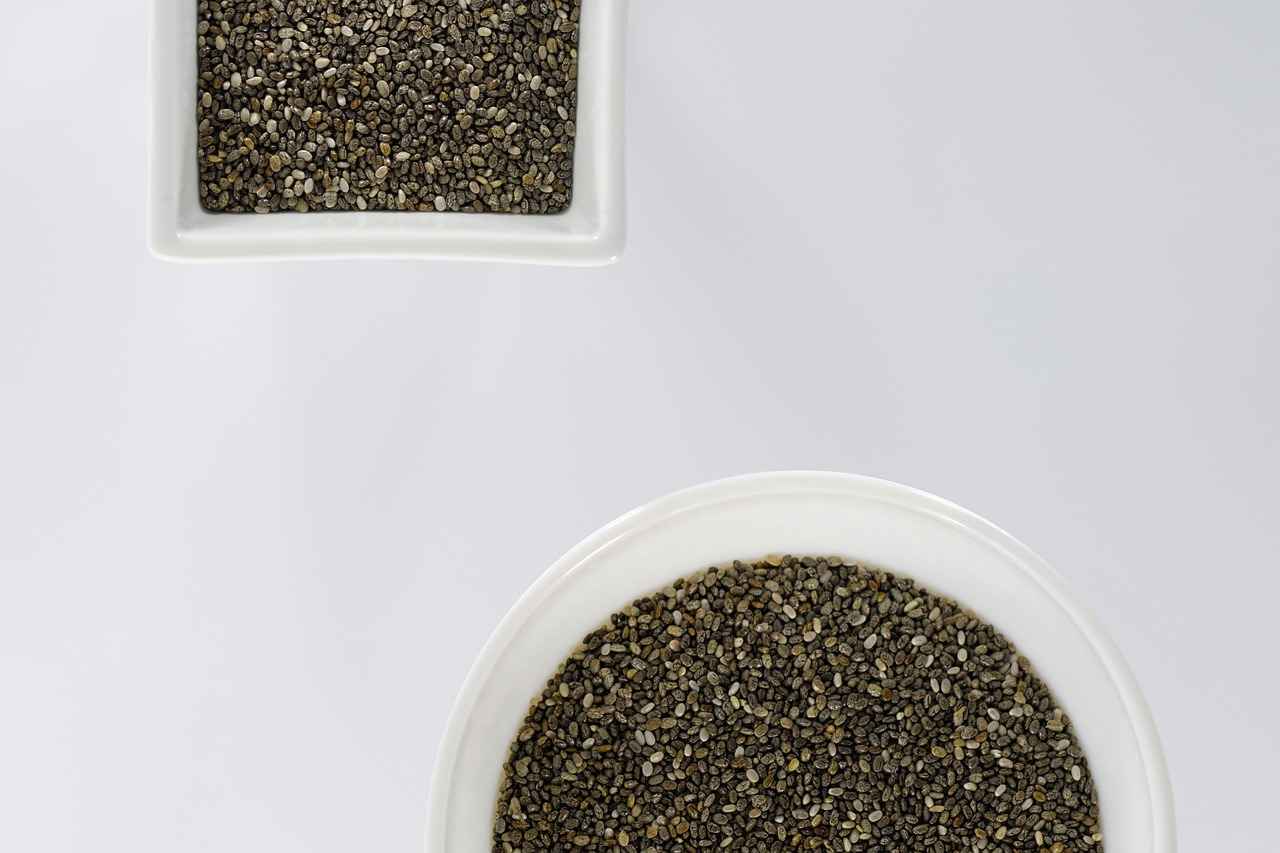
How to Choose Between Ground and Whole Chia Seeds?
When it comes to incorporating chia seeds into your diet, the choice between ground and whole chia seeds can be quite significant. This decision often hinges on personal preferences, specific dietary needs, and the intended culinary applications. Understanding these elements can greatly aid in making an informed choice.
Your culinary preferences play a crucial role in deciding between ground and whole chia seeds. If you enjoy a smoother texture in your recipes, ground chia seeds may be more suitable. They blend seamlessly into smoothies, sauces, and baked goods, enhancing nutritional value without altering the dish’s overall texture. On the other hand, if you prefer a crunchy texture and visual appeal in your meals, whole chia seeds can provide that satisfying bite, especially in salads, yogurt, or as a topping.
Consider your nutritional goals when choosing between the two forms. Ground chia seeds are often touted for their improved nutrient absorption. By grinding the seeds, you may enhance the bioavailability of essential nutrients, including omega-3 fatty acids and antioxidants. Conversely, whole chia seeds are rich in dietary fiber, which aids in digestion and promotes a feeling of fullness, making them a great choice for weight management.
The impact of chia seeds on digestion can vary significantly based on their form. Ground chia seeds may be easier to digest for some individuals, particularly those with sensitive digestive systems. They can help alleviate digestive discomfort due to their finer consistency. In contrast, whole chia seeds can swell in the stomach, absorbing water and expanding, which may help promote healthy bowel movements and enhance satiety.
Both ground and whole chia seeds offer numerous health benefits. They are rich in omega-3 fatty acids, which are known to support heart health and reduce inflammation. Ground chia seeds may provide a slight edge in nutrient absorption, but whole chia seeds can contribute to your daily fiber intake, promoting digestive health and potentially aiding in weight loss efforts.
- Ground Chia Seeds: Ideal for smoothies, oatmeal, and baked goods. They can also be used as a thickening agent in soups and sauces.
- Whole Chia Seeds: Perfect for adding a crunchy texture to salads, yogurt, and desserts. They can also be sprinkled on top of various dishes for added nutrition.
While chia seeds are generally safe for most individuals, it’s important to be aware of potential risks. Some people may experience digestive discomfort, especially when consuming whole chia seeds in large quantities. To avoid this, it’s advisable to start with small amounts and gradually increase your intake. Additionally, those with known allergies to chia seeds should exercise caution and consult a healthcare professional.
Ultimately, the decision between ground and whole chia seeds should align with your personal preferences, dietary needs, and health goals. Whether you opt for the enhanced nutrient absorption of ground chia or the satisfying crunch of whole chia, both forms can be valuable additions to a healthy diet. Emphasizing moderation and variety will allow you to reap the numerous benefits these tiny seeds have to offer.
Personal Preferences: Taste and Texture
When it comes to incorporating chia seeds into your diet, personal preferences regarding taste and texture play a crucial role in your decision-making process. The choice between ground chia seeds and whole chia seeds is not merely about nutrition; it also significantly impacts your culinary experience.
The flavor of chia seeds is often described as mild and nutty, which can complement a wide range of dishes. However, the way you prepare them can influence how their taste is perceived. For instance, ground chia seeds tend to blend seamlessly into recipes, allowing their nutritional benefits to shine without altering the flavor profile of your meals. This makes them an excellent choice for smoothies, baked goods, and sauces, where a smoother consistency is desired.
Texture is another important factor that affects your enjoyment of chia seeds. Ground chia seeds provide a silky and smooth texture, making them ideal for recipes that require a uniform consistency. They can easily be mixed into oatmeal or yogurt without creating any graininess. On the other hand, whole chia seeds offer a delightful crunch that can enhance the sensory experience of your dishes. When added to salads or puddings, they create a unique contrast that many people find appealing.
Your choice between ground and whole chia seeds can also dictate how you use them in your cooking. For example, if you prefer a creamier texture in your smoothies, ground chia seeds are the way to go. They can be blended into beverages without any noticeable graininess, enriching your drink with nutrients while maintaining a smooth mouthfeel. Conversely, if you enjoy a bit of texture in your meals, whole chia seeds can be sprinkled on top of dishes or mixed into salads for added crunch.
From a health perspective, the texture of chia seeds can influence digestion. Ground chia seeds may be easier to digest, allowing for quicker nutrient absorption. This can be particularly beneficial for individuals with sensitive digestive systems. In contrast, whole chia seeds can absorb liquid and expand in your stomach, promoting a feeling of fullness that may aid in weight management. This property can be advantageous for those looking to control their appetite.
- For Smoothies: Use ground chia seeds for a seamless blend.
- For Puddings: Whole chia seeds can create a delightful texture.
- In Baking: Ground chia seeds can replace flour in some recipes, enhancing nutrition.
- In Salads: Whole chia seeds add a crunch that can elevate your dish.
Ultimately, the decision between ground and whole chia seeds should align with your taste preferences, culinary applications, and health goals. Experimenting with both forms can lead to a better understanding of how they fit into your diet and enhance your meals.
Dietary Needs and Health Goals
When it comes to enhancing your diet with chia seeds, understanding your dietary needs and health goals is essential. These tiny seeds are packed with nutrients, but the way you incorporate them can significantly impact their benefits. This section will delve into how ground and whole chia seeds align with various health objectives.
Your health goals serve as a roadmap for your dietary choices. Whether you’re aiming for better nutrient absorption, increased fiber intake, or overall wellness, chia seeds can play a crucial role. Let’s explore how each form of chia seed can cater to specific health needs.
If your primary focus is on nutrient absorption, ground chia seeds may be the superior choice. Grinding the seeds breaks down their tough outer layer, making it easier for your body to access the nutrients within. This process can lead to:
- Improved Bioavailability: Nutrients such as omega-3 fatty acids, antioxidants, and vitamins are more readily absorbed when the seeds are ground.
- Quicker Digestion: Ground chia seeds can lead to faster digestion, allowing your body to utilize the nutrients more efficiently.
On the other hand, if your goal is to boost your fiber intake, whole chia seeds are an excellent option. They contain a substantial amount of fiber, which can provide several benefits:
- Promotes Digestive Health: Whole seeds can help regulate bowel movements and prevent constipation due to their high fiber content.
- Satiety and Weight Management: Whole chia seeds absorb water, expanding in your stomach and promoting a feeling of fullness, which can aid in weight management.
Ultimately, the choice between ground and whole chia seeds depends on your individual dietary needs. If you find that you struggle with digestion or nutrient absorption, leaning towards ground chia seeds may be beneficial. Conversely, if you are looking to enhance your fiber intake and support digestive health, whole chia seeds could be the better option.
Regardless of your choice, there are numerous ways to incorporate chia seeds into your meals. Here are some practical suggestions:
- Smoothies: Blend ground chia seeds into smoothies for a nutrient boost.
- Baked Goods: Add ground chia seeds to muffins or bread for added texture and nutrition.
- Salads and Yogurt: Sprinkle whole chia seeds on salads or mix them into yogurt for a delightful crunch.
Before making significant changes to your diet, especially if you have specific health concerns, it’s wise to consult a healthcare professional. They can provide tailored advice based on your unique health goals and dietary needs.
In summary, both ground and whole chia seeds offer unique benefits that can align with your health goals. By understanding the differences and considering your individual needs, you can make informed decisions that enhance your overall well-being.
Frequently Asked Questions
- What are the main differences between ground and whole chia seeds?
Ground chia seeds are easier to digest and may enhance nutrient absorption, while whole chia seeds provide a satisfying crunch and are high in fiber.
- Can I use ground chia seeds in cooking?
Absolutely! Ground chia seeds can be easily incorporated into smoothies, baked goods, and sauces, boosting nutrition without altering texture.
- Are there any health risks associated with chia seeds?
While generally safe, some may experience digestive discomfort or allergies. It’s important to start with small amounts and monitor your body’s response.
- Which form of chia seeds is better for weight management?
Both forms can aid in weight management, but whole chia seeds may promote a feeling of fullness more effectively due to their ability to absorb water.
- How should I choose between ground and whole chia seeds?
Your choice depends on personal preferences and dietary needs. If you prefer a smoother texture and better nutrient absorption, go for ground; for added crunch, choose whole seeds.
